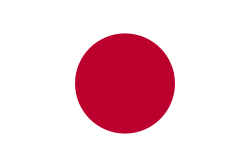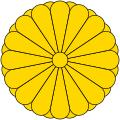Event research Autumn Nations Series - Ireland V Japan
Autumn Nations Series - Ireland V Japan tickets are on sale right now.
Are Autumn Nations Series - Ireland V Japan tickets likely to be profitable in Dublin?
There is 1 presale for this event.
Autumn Nations Series - Ireland V Japan
Aviva Stadium
Dublin
Nov 8 Sat • 2025 • 12:40pm
Field Sports | RugbyAi Ticket Reselling Prediction
Sign Up to get artificial intelligence powered ticket reselling predictions!
Using artificial intelligence, concert attendance stats, and completed sales history for ticket prices on secondary market sites like Stubhub, we can predict whether this event is hot for resale. The Ai also considers factors like what music genre, and what market the concert is in.
Shazam is a music app that helps you identify the music playing around you. The more times an artist gets Shazamed, the higher this score will be, which should give you an idea of the popularity of this artist. Scores are ranked on a scale of 1 to 5. Learn more
Google Trends shows how popular a search query is for an artist. The more popular the artist is and the more people that are Googling them, the higher this score will be. Scores are ranked on a scale of 1 to 5. Learn more
51,700
Capacity
Autumn Nations Series - Ireland V Japan at the Aviva Stadium, Dublin
Tour Schedule
Autumn Nations Series - Ireland V Japan
11 similar events found
Watch on YouTube
Listen on iTunes
Wikipedia Bio
Japan | |
|---|---|
| Anthem: 君が代 ("Kimigayo") "His Imperial Majesty's Reign" | |
| State seal: 大日本國璽 (Dai Nihon Kokuji) "National Seal of Greater Japan"  | |
 Location of Japan
| |
| Capital and largest city | Tokyo 35°41′N 139°46′E / 35.683°N 139.767°E / 35.683; 139.767 |
| National language | Japanese |
Regional languages |
|
| Demonym(s) | Japanese |
| Government | Unitary parliamentary constitutional monarchy |
• Emperor | Naruhito |
| Shigeru Ishiba | |
| Legislature | National Diet |
| House of Councillors | |
| House of Representatives | |
| Formation | |
| November 29, 1890 | |
| May 3, 1947 | |
| Area | |
• Total | 377,975 km2 (145,937 sq mi)[4] (62nd) |
• Water (%) | 1.4[3] |
| Population | |
• June 1, 2025 estimate | |
• 2020 census | |
• Density | 330/km2 (854.7/sq mi) (39th) |
| GDP (PPP) | 2025 estimate |
• Total | |
• Per capita | |
| GDP (nominal) | 2025 estimate |
• Total | |
• Per capita | |
| Gini (2018) | medium inequality |
| HDI (2023) | very high (23rd) |
| Currency | Japanese yen (¥) |
| Time zone | UTC+09:00 (JST) |
| Calling code | +81 |
| ISO 3166 code | JP |
| Internet TLD | .jp |
Japan[a] is an island country in East Asia. Located in the Pacific Ocean off the northeast coast of the Asian mainland, it is bordered to the west by the Sea of Japan and extends from the Sea of Okhotsk in the north to the East China Sea in the south. The Japanese archipelago consists of four major islands alongside 14,121 smaller islands, covering 377,975 square kilometers (145,937 sq mi). Divided into 47 administrative prefectures and eight traditional regions, about 75% of the country's terrain is mountainous and heavily forested, concentrating its agriculture and highly urbanized population along its eastern coastal plains. With a population of over 123 million as of 2025, it is the 11th most populous country. The country's capital and largest city is Tokyo.
The first known habitation of the archipelago dates to the Upper Paleolithic, with the beginning of the Japanese Paleolithic dating to c. 36,000 BC. Between the 4th and 6th centuries, its kingdoms were united under an emperor in Nara and later Heian-kyō. From the 12th century, actual power was held by military dictators known as shōgun and feudal lords called daimyō, enforced by warrior nobility named samurai. After rule by the Kamakura and Ashikaga shogunates and a century of warring states, Japan was unified in 1600 by the Tokugawa shogunate, which implemented an isolationist foreign policy. In 1853, an American fleet forced Japan to open trade to the West, which led to the end of the shogunate and the restoration of imperial power in 1868.
In the Meiji period, Japan pursued rapid industrialization and modernization, as well as militarism and overseas colonization. The country invaded China in 1937 and attacked the United States and European colonial powers in 1941, thus entering World War II as an Axis power. After being defeated in the Pacific War and suffering the U.S. atomic bombings of Hiroshima and Nagasaki, Japan surrendered in 1945 and came under Allied occupation. Afterwards, the country underwent rapid economic growth and became one of the five earliest major non-NATO allies of the U.S. Since the collapse of the Japanese asset price bubble in the early 1990s, it has experienced a prolonged period of economic stagnation referred to as the Lost Decades.
Japan is a constitutional monarchy with a bicameral legislature known as the National Diet. Widely considered a great power and the only Asian member of the G7, it maintains one of the world's strongest militaries but has constitutionally renounced its right to declare war. A developed country with one of the world's largest economies by nominal GDP, Japan is a global leader in the automotive, electronics, and robotics industries, in addition to making significant contributions to science and technology. It has one of the highest life expectancies, but is undergoing a severe population decline and has the highest proportion of elderly citizens of any country in the world. The culture of Japan is globally well known, especially its popular culture, which includes art, cuisine, films, music, animation, comics, and video games.
- ^ Lewallen, Ann-Elise (November 1, 2008). "Indigenous at last! Ainu Grassroots Organizing and the Indigenous Peoples Summit in Ainu Mosir". The Asia Pacific Journal (Japan Focus). No. 11. Archived from the original on October 23, 2023.
- ^ Martin, Kylie (2011). "Aynu itak: On the Road to Ainu Language Revitalization" (PDF). Media and Communication Studies メディア·コミュニケーション研究. 60: 57–93. Archived (PDF) from the original on April 21, 2015.
- ^ "Surface water and surface water change". OECD. Archived from the original on March 24, 2021. Retrieved October 11, 2020.
- ^ 令和元年全国都道府県市区町村別面積調 (10月1日時点) [Reiwa 1 nationwide area survey by prefectures and municipalities (as of October 1)] (in Japanese). Geospatial Information Authority of Japan. December 26, 2019. Archived from the original on April 15, 2020.
- ^ "Population estimates by age (five-year groups) and sex". Statistics Bureau of Japan. Archived from the original on April 5, 2018. Retrieved February 20, 2024.
- ^ "2020 Population Census: population by sex, age (single years), month of birth and all nationality or Japanese". Statistics Bureau of Japan. Archived from the original on July 7, 2024. Retrieved July 7, 2024.
- ^ a b c d "World Economic Outlook Database, April 2025 Edition. (Japan)". www.imf.org. International Monetary Fund. April 22, 2025. Retrieved May 26, 2025.
- ^ "Inequality – Income inequality". OECD. Archived from the original on July 1, 2022. Retrieved July 25, 2021.
- ^ "Human Development Report 2025" (PDF). United Nations Development Programme. May 6, 2025. Archived (PDF) from the original on May 6, 2025. Retrieved May 6, 2025.
- ^ "Official Names of Member States (UNTERM)" (PDF). UN Protocol and Liaison Service. Archived from the original (PDF) on June 5, 2020. Retrieved May 21, 2020.
Cite error: There are <ref group=lower-alpha> tags or {{efn}} templates on this page, but the references will not show without a {{reflist|group=lower-alpha}} template or {{notelist}} template (see the help page).
Source: Wikipedia



